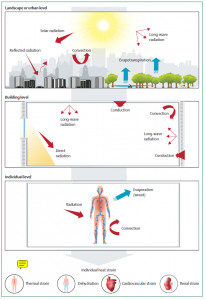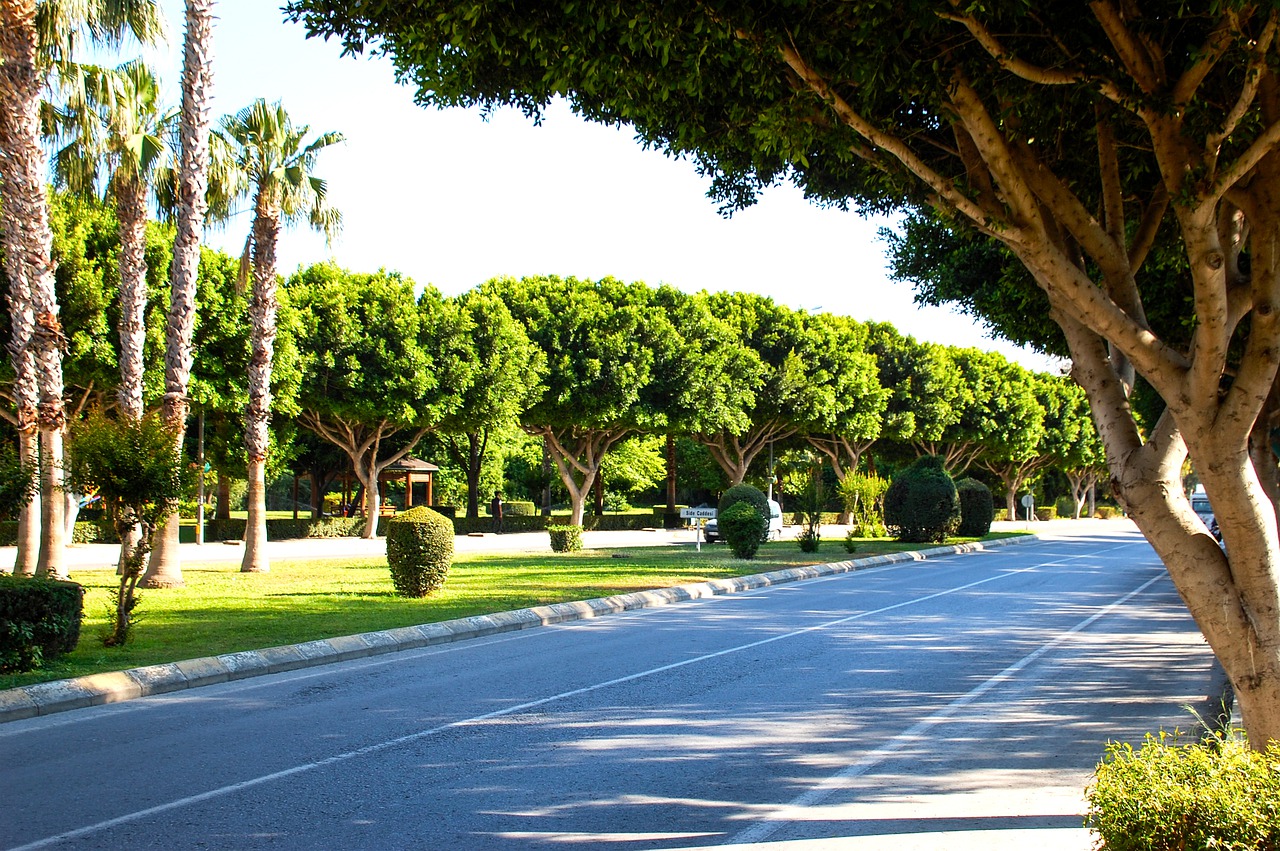Comment to article: “Reducing the health effects of hot weather and heat extremes: from personal cooling strategies to green cities”.
Referencia: Jay O, Capon A, Berry P, Broderick C, de Dear R, Havenith G, Honda Y, Kovats RS, Ma W, Malik A, Morris NB, Nybo L, Seneviratne SI, Vanos J, Ebi KL. Reducing the health effects of hot weather and heat extremes: from personal cooling strategies to green cities. Lancet. 2021 Aug 21;398(10301):709-724.
- What is known about this subject??
The effects of climate change such as heatwaves have a serious impact on health. Long-term temperatures above average are associated with an excess mortality. This has a greater impact on the most vulnerable populations, the elderly or individuals with physical disabilities, people living with cardiopulmonary disease or other chronic illnesses, and children, regardless of their level of income or the geographic region in which they live. Heat-related morbidity and mortality are projected to increase further as climate changes progresses, with a greater risk associated with higher degrees of global warming. In addition to mortality, exposure to extreme temperatures are also associated with increased mental health issues and adverse events during pregnancy and birth, a higher number of emergency room visits and hospital admissions, and the inevitable consequence of increasing health care costs [1].
On the other hand, climate change interacts with other patterns such as population ageing and socioeconomic development, which can exacerbate heat-related risks. Coping with heat extremes is particularly challenging for people who cannot afford air conditioning or have restricted access to clean drinking water. As the world is facing even hotter weather as a consequence of global climate change, it is important to understand the most effective prevention measures that can be implemented, particularly in low-resource settings.
- What does this study add to the existing literature?
The consequences and impact of the increasingly frequent extreme heatwaves on human health, and the prevention measures for coping are two of the main issues addressed in a new series published in The Lancet British Medical Journal. This second paper [2] of the series describes how a future reliance on air conditioning is unsustainable and further marginalizes the communities that are most vulnerable to the heat. According to this article, high temperatures experienced by the individual are the result of a heat scale system that interacts and generates a top-down heat cascade whereby the excess heat load at the landscape and urban level is transferred to buildings and eventually to the individual (see figure below). Thus, properties of the thermal environment in which we live are essential and can be modified to reduce the amount of heat transferred from one level of the cascade to the next.
Within this framework, this paper describes the opportunities for applying other cheaper and far more sustainable cooling strategies during heatwaves, at the landscape and urban level (e.g., increasing blue and green spaces), in buildings (changing materials and increasing natural ventilation) and for individuals. The authors summarise the benefits and limitations of each strategy, bearing in mind that the effectiveness of each strategy is dependent on the particular setting in which the strategy is implemented. In addition, the authors detail numerous sustainable opportunities to keep people cooler and recommend efficient interventions for vulnerable settings such as aged care homes, slums, workplaces, schools, mass gatherings, refugee camps and sport facilities.
The integration of this information into well-communicated heat action plans, together with robust surveillance and monitoring, is essential for reducing the adverse health consequences of extreme heat.
- ¿What are the implications of the findings?
Andalusia is the region that has suffered the highest number of heat waves in Spain. Jaen ranks fifth among the Spanish provinces with the highest number of hot spells, adding a total of 201 days of high temperatures [3]. A recent study, [4] based on empirical data, conducted in 1991-2018 and involving 43 countries (732 locations, including Seville from Spain) estimates that 37% of all heat-related deaths can be attributed to excess heat as a consequence of global warming. Such studies provide clear evidence of the urgent need for sustainable and effective strategies to reduce de impacts of climate change on public health. On the other hand, according to the 2020 State of Poverty Report, 28.5 % of the Andalusian population are at risk of poverty or social exclusion, and more than 10% are unable to keep their home at an adequate temperature [5]. These figures are aggravated by the continuous rise in electricity prices.
Considering a more holistic understanding of the thermal environment and its relation to the individual, and implementing interventions for the most vulnerable such as those described in The Lancet review, provides an opportunity to move forward and further develop action plans to mitigate the consequences of global climate on population health.
References:
[1] Ebi KL, Capon A, Berry P, Broderick C, de Dear R, Havenith G, Honda Y, Kovats RS, Ma W, Malik A, Morris NB, Nybo L, Seneviratne SI, Vanos J, Jay O. Hot weather and heat extremes: health risks. Lancet. 2021 Aug 21;398(10301):698-708.
[2] Jay O, Capon A, Berry P, Broderick C, de Dear R, Havenith G, Honda Y, Kovats RS, Ma W, Malik A, Morris NB, Nybo L, Seneviratne SI, Vanos J, Ebi KL. Reducing the health effects of hot weather and heat extremes: from personal cooling strategies to green cities. Lancet. 2021 Aug 21;398(10301):709-724.
[3] Andalucia en Datos. https://www.andaluciaendatos.es/andalucia-a-la-cabeza-en-numero-de-olas-de-calor
[4] Vicedo-Cabrera AM, Scovronick N, Sera F, Royé D, Schneider R, Tobias A, Astrom C, Guo Y, et al. The burden of heat-related mortality attributable to recent human-induced climate change. Nat Clim Chang. 2021 Jun;11(6):492-500.
[5] EL ESTADO DE LA POBREZA. Seguimiento del indicador de pobreza y exclusión social en España 2008-2020. Disponible en: https://www.eapn.es/estadodepobreza/ARCHIVO/documentos/informe-AROPE-2021-andalucia.pdf
[6] PLAN ANDALUZ PARA LA PREVENCIÓN DE LOS EFECTOS DE LAS TEMPERATURAS EXCESIVAS SOBRE LA SALUD 2020. Consejería de Salud y Familias. Consejería de Igualdad, Políticas Sociales y Conciliación Consejería de la Presidencia, Administración Pública e Interior. Disponible en: https://www.juntadeandalucia.es/export/drupaljda/Plan%20Andaluz%20Temperaturas%20Excesivas%202020_0.pdf
Figure. Heat transfer pathways at all levels of the heat cascade [2]




